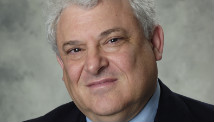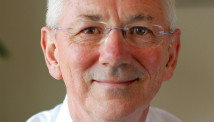MELBOURNE, Australia (AP) — Sloane Stephens sat for nine minutes, mostly staring at the court and trying to forget the curious timing of Victoria Azarenka's medical timeout. She may have been the only one trying to ignore it.
The 19-year-old American had just saved five match points and broken Azarenka. But she knew she had to hold serve to stay in her first Grand Slam semifinal whenever Azarenka — the No. 1 player and defending Australian Open champion — returned to Rod Laver Arena.
The restless murmuring in the crowd gave way to slow claps. Why had Azarenka chosen that very moment for a medical break?
Azarenka eventually hustled onto the court, and Stephens won only three more points, losing 6-1, 6-4.
"I almost did the choke of the year," Azarenka said in a frank admission during an on-court interview. "At 5-3, having so many chances, I couldn't close it out."
The crowd that had cheered wildly for Stephens, only 25 hours after she ousted an injured Serena Williams, gave Azarenka tepid applause as she left the court. She'll face 2011 finalist Li Na in the final Saturday night. Given the support Li enjoyed in her 6-2, 6-2 win over No. 2-ranked Maria Sharapova, there's no question which player the crowd will favor in the title match.
Azarenka's immediate post-match remarks suggest she panicked after failing to convert five match points, her forehand misfiring. She had little trouble finishing the match after she came back, and the No. 29-seeded Stephens had cooled off.
"I just felt a little bit overwhelmed. I realized I'm one step away from the final and nerves got into me for sure," Azarenka said.
The 23-year-old Belarusian said she was later compelled to explain that she misunderstood the question in the on-court interview, and she wanted to dispel the perception that her medical timeout amounted to little more than gamesmanship.
"I understand the point of people maybe not understanding what I said; me not understanding what I've been asked," she said during an official news conference more than two-thirds devoted to questions on her medical timeout. "So I'm just glad that I'm here, you know, to make everything clear.
"You know, I think you cannot really judge by (a) few words. The situation had to be explained."
Medical staff said Azarenka had timeouts for treatment of left knee and rib injuries. The rib needed to be manipulated because it was affecting her breathing. Tournament director Craig Tiley said Azarenka hadn't broken any rules.
Azarenka hadn't helped herself in a second television interview after the match when she said she couldn't breathe.
"I had chest pains," she said. "It was like I was getting a heart attack."
She tried to allay any negative perception with her explanation that the choking was related to shortness of breath from the rib injury, not her faltering game.
"When you cannot breathe you start to panic," she said. "I was really panicking, not because I couldn't convert my match point. That's not the case. I mean, I'm experienced enough to go over those emotions. But when you cannot breathe, when something's really blocking you, the stress — that was the stress I was talking about.
"What I said — that I was stressed out and choked — was not because I couldn't finish my shot. It was just so stressing me out the pain that I had that, maybe it was overreaction, but I just really couldn't breathe."
Azarenka had retired during previous Grand Slam matches, including a fourth-round match against Serena Williams at the 2009 Australian Open. But with a second major title so close, and the fact she needed to reach the final to retain the No. 1 ranking, she desperately didn't want to quit this time.
For her part, Stephens seemed sympathetic. She had to wait through a medical timeout Wednesday when Williams received treatment for a sore back — the 15-time major winner injured herself after leading by a set and a break. Another rival earlier in the tournament took a long break between sets for other reasons.
"I mean, when you take a medical break or timeout, obviously it's for a reason," she said. "I mean, just another something else that happens. If it was one of my friends, I would say, 'Oh, my God, that sounds like a PP, which is a personal problem. Other than that, it's just unfortunate."
Besides, Stephens said, it didn't affect the outcome of the match.
"No, not at all. She played obviously a really good match," she said. "First set she played awesome; got close in the second. It didn't go my way, but I wouldn't say at all what happened affected the match."
Novak Djokovic dispensed with No. 4-seeded David Ferrer 6-2, 6-2, 6-1 in the night match, saying he "played perfectly" to reach his third consecutive Australian Open title match. Then he dispensed some medical advice of his own.
The Serb, who won the Australian titles in 2008, 2011 and 2012, wore a white shirt with a red cross on the back, pretending to be a doctor to treat Henri Leconte during a legends doubles match at Rod Laver Arena.
He's relaxed now that he has an extra day to prepare for Sunday's final. Djokovic will next play the winner of Friday's semifinal between No. 2 Roger Federer, a four-time Australian Open champion, and No. 3 Andy Murray, the U.S. Open champion.
Djokovic lost only seven points in 11 service games against Ferrer, and hit 30 crisp, clean winners in an almost flawless performance.
"I cannot remember the last time I played so well," Djokovic said. "I've played many great matches, but this one stands out. Hopefully, I can play the same level on Sunday."
He played confidently in the first two sets, and was sublime in the third. Even Ferrer, who has now lost five Grand Slam semifinals and never reached a championship match, was surprised.
After hitting a forehand a fraction wide of the line and losing his challenge in a review, Ferrer double-faulted to give Djokovic match point. The errors were a measure of just how much pressure Djokovic was applying.
Right after his semifinal, Djokovic started playing mind games leading to the final.
"Federer-Murray, when they're playing it's always very close," he said, confirming he'd be closely watching the match. "I wouldn't give the role of the favorite to either of them. I expect to enjoy it. Whoever I play against, I'm going to be ready."


